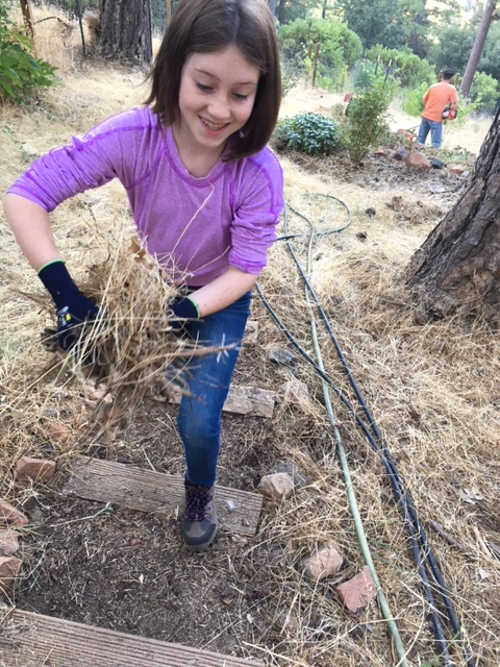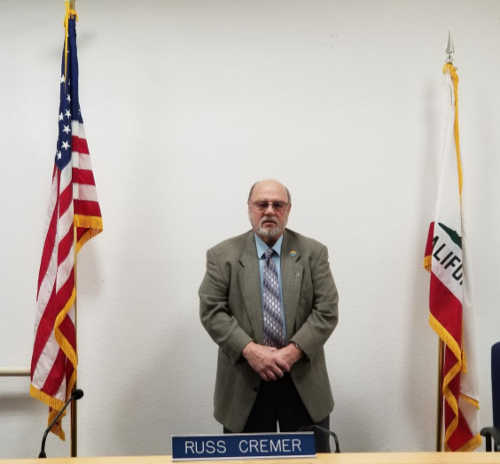NORTH COAST, Calif. – On Wednesday the Mendocino County Sheriff’s Office identified the married couple and their three children killed in a Monday crash near Westport, and said it is still trying to locate three other children.
The victims in the crash are Jennifer Jean Hart and her wife Sarah Margaret Hart, both age 38, and their children, Markis Hart, 19, Jeremiah Hart, 14, and Abigail Hart, 14, all of Woodland, Wash., according to Lt. Shannon Barney of the Mendocino County Sheriff’s Office.
On Monday at approximately 4:16 p.m., the Mendocino County Sheriff's Office was dispatched the area of Highway 1 at County Road 430, also called Juan Creek, in Westport regarding a traffic accident involving multiple fatalities, Barney said.
Barney said the incident had been reported to fire officials and the California Highway Patrol around 3:38 p.m. after a passerby used a pullout along the road and observed the vehicle off the embankment, upside down on the rocky shoreline.
While the sheriff's office was en route to the call it was learned there were possibly two adult females, two juvenile males and one juvenile female deceased at the scene, which Barney said led the sheriff's office to initiate a coroner's Investigation. Meanwhile, first responders continued recovery efforts until well after midnight.
At 8 a.m. Tuesday, the Mendocino County Sheriff's Office confirmed the identity of the two adult females as Jennifer and Sarah Hart, a married couple who had previously resided in West Linn, Ore.
It was later learned that the couple had six adopted children, Barney said, three of whom died in the crash.
The three so far unaccounted for are Devonte Hart, 15, Hannah Hart, 16, and Sierra Hart, 12, Barney said.
After learning of the three additional children who were unaccounted for, the Sheriff's Office, the California Highway Patrol, and the United States Coast Guard out of Fort Bragg immediately initiated a second search and rescue effort in the ocean waters where the accident occurred, Barney said. The California Highway patrol launched a fixed wing airplane and a helicopter, the Coast Guard launched a rescue boat in the area, while the Mendocino County Sheriff's Search and Rescue responded to search the beach areas along the Highway.
One of the unaccounted for children is Devonte Hart, who Barney said drew widespread media attention in 2014 after having been
photographed hugging a Portland Oregon Police sergeant during a demonstration related to the protests over the shooting of Michael Brown in Ferguson, Missouri.
Barney said the sheriff's office reached out to the Portland Oregon Police Department and learned that the family, due to intense media coverage, may have moved from Oregon.
The family was tracked to an address in Woodland, Wash., where, with assistance from the Clark County Washington Sheriff's Office, the family home was checked and the three missing children were not located, Barney said.
The Mendocino County Sheriff's Office was advised by the Clark County Sheriff's Office that it appeared the family may have left for a temporary trip as there were many family belongings still in the home as well as a pet and some chickens, according to Barney’s report.
On Wednesday Barney said the sheriff’s office positively identified the children who were found at the crash site with the help of family members.
As of the Wednesday afternoon report, Barney said it was unknown if the three missing children accompanied their parents on the trip to Mendocino County or if they might be staying with friends.
Also on Wednesday, Barney said the Alameda County Sheriff's Office responded to assist the Mendocino County Sheriff's Office by sending six deputies trained in the operation of unmanned aerial vehicles that are used for search and rescue incidents to assist with combing the coastline in an effort to locate the three missing children.
So far the ocean conditions have not allowed the use of rescue/recovery divers in the search efforts. Barney said the Mendocino County Sheriff's Search and Rescue Team has divers on standby if the ocean conditions improve.
The cause of the wreck is being investigated by the California Highway Patrol’s Ukiah Area office. The CHP said its Northern Division Multidisciplinary Accident Team, or MAIT, has been assigned to investigate the crash.
The CHP said the MAIT program conducts in-depth investigations and analyses of crashes. Investigations include the reconstruction of an incident and a study of the factors that may have contributed to it. The factors include environmental, human and mechanical, and are associated with the three phases of a collision – pre-collision, at-collision and post-collision.
The MAIT team includes one CHP sergeant who is the team leader, two or more CHP officers, one motor carrier specialist and one senior transportation engineer from Caltrans, the CHP said.
The Mendocino County Sheriff's Office thanked the California Highway Patrol, the Portland Oregon Police Department, the Clark County Washington Sheriff's Office, the Grant County South Dakota Sheriff's Office, the Huron City South Dakota Police Department, the Cowlitz County Department of Social Services and the Alameda County California Sheriff's Office for their assistance in this case.
Anyone with information in the case can contact the Mendocino County Sheriff’s Office at 707-463-4411 or the CHP’s Ukiah Area office at 707-467-4420.

 How to resolve AdBlock issue?
How to resolve AdBlock issue? 








